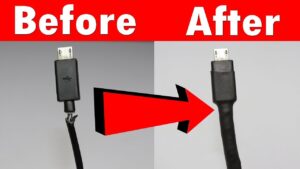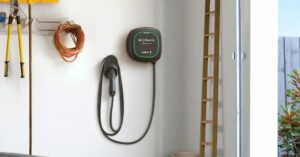Looking for a way to discharge your lithium-ion battery? You’ve come to the right place! Discharging a lithium-ion battery may seem like a complex task, but fear not, we’re here to guide you through the process. In this article, we’ll explain how to safely and effectively discharge your battery, ensuring optimal performance and longevity. So, if you’re ready to learn how to discharge a lithium-ion battery, keep reading!
How to Discharge a Lithium-Ion Battery: A Comprehensive Guide
As technology continues to advance, lithium-ion batteries have become a staple power source for a wide range of electronic devices. Whether you’re dealing with a smartphone, laptop, or electric vehicle, understanding how to properly discharge a lithium-ion battery is essential for both performance and longevity. In this comprehensive guide, we will explore various methods and best practices for discharging a lithium-ion battery effectively.
Why is Discharging a Lithium-Ion Battery Important?
Before delving into the specific techniques for discharging a lithium-ion battery, it’s crucial to understand why this process matters. Here are a few key reasons:
- Battery memory effect: Unlike older types of batteries, lithium-ion batteries do not suffer from memory effect. However, discharging the battery periodically can help recalibrate the battery’s internal monitoring system, improving the accuracy of its state of charge readings.
- Battery lifespan: Regularly discharging a lithium-ion battery can help prevent it from entering a deep discharge state, which can be harmful and lead to reduced battery capacity over time. By avoiding deep discharges, you can extend the overall lifespan of the battery.
- Performance optimization: Discharging a lithium-ion battery helps recalibrate its capacity readings, ensuring that the battery’s performance remains accurate and consistent.
Factors to Consider Before Discharging
While discharging a lithium-ion battery is generally a straightforward process, there are a few factors to consider before proceeding:
- Battery type: Lithium-ion batteries come in various chemistries, including lithium cobalt oxide (LiCoO2), lithium manganese oxide (LiMn2O4), and lithium iron phosphate (LiFePO4), among others. Make sure you know the specific type of battery you are working with, as different chemistries may have slightly different discharge characteristics.
- Battery capacity: Understanding the capacity of your battery is important, as it determines the amount of energy it can store. Discharging a battery to its minimum safe level can help recalibrate its capacity readings and optimize performance.
- Safety precautions: Always prioritize safety when working with lithium-ion batteries. Avoid short-circuits, overheating, and physical damage that may lead to a battery malfunction or even a dangerous situation.
Methods for Discharging a Lithium-Ion Battery
Now that we’ve covered the importance and considerations, let’s explore different methods you can use to discharge a lithium-ion battery:
Method 1: Using the Device Normally
The most common method for discharging a lithium-ion battery is to use the device normally until the battery drains to a low level. This method is convenient and easy to follow:
- Use the device as you normally would, allowing the battery to gradually deplete its charge.
- Avoid using power-saving modes or limiting the device’s performance during this process.
- Continue using the device until it automatically shuts down due to low battery power.
Using the device normally allows the battery to discharge naturally, providing an accurate reading of the battery’s remaining capacity.
Method 2: Playing a Resource-Intensive Application
If you want to discharge your battery more quickly, you can also use a resource-intensive application or game. This method is particularly useful if you want to recalibrate the battery’s capacity readings or quickly drain the battery:
- Close all unnecessary applications to ensure the resource-intensive application receives maximum processing power.
- Open a resource-intensive application or game that puts a significant load on the device’s CPU and GPU.
- Allow the application to run until the battery level drops to the desired discharge level.
Keep in mind that resource-intensive applications may also generate additional heat, so monitor your device’s temperature and ensure it remains within safe limits.
Method 3: Using a Battery Discharge Tool
If you prefer a more controlled and precise method for discharging your lithium-ion battery, using a dedicated battery discharge tool can be an excellent option. These tools are specifically designed to discharge batteries while monitoring key parameters:
- Research and choose a reliable battery discharge tool compatible with your device and battery type.
- Follow the tool’s instructions for connecting and configuring the device and battery parameters.
- Initiate the discharge process and monitor the tool’s progress until the battery reaches the desired discharged state.
Using a battery discharge tool provides more control over the discharge process and allows for accurate measurement of the battery’s capacity and voltage.
Best Practices for Discharging Lithium-Ion Batteries
To ensure safe and effective battery discharge, consider following these best practices:
- Avoid deep discharges: While occasional deep discharges can help recalibrate the battery, frequent deep discharges can harm the battery’s lifespan. Prevent your battery from reaching extremely low levels of charge whenever possible.
- Monitor heat levels: High temperatures during the discharge process can put stress on the battery and reduce its overall lifespan. Keep an eye on the device’s temperature and avoid exposing it to extreme heat.
- Follow manufacturer guidelines: Manufacturers often provide specific instructions on battery discharge procedures. Refer to the user manual or manufacturer’s website for any guidelines or recommendations.
- Recalibrate periodically: Discharging your lithium-ion battery to its minimum safe level every few months can help recalibrate its capacity readings and ensure accurate performance monitoring.
Discharging a lithium-ion battery is a crucial aspect of maintaining its performance and prolonging its lifespan. By understanding the importance of this process, considering the relevant factors, and following the appropriate methods and best practices, you can effectively discharge your battery while optimizing its performance. Remember to prioritize safety and consult the manufacturer’s guidelines whenever necessary. With these insights and techniques, you can confidently discharge your lithium-ion battery and enjoy reliable power for your devices.
How To Discharge Your R/C LiPo Batteries – Fast!
Frequently Asked Questions
How do I discharge a lithium-ion battery?
To discharge a lithium-ion battery, you can follow these steps:
- Use the device: One of the simplest ways to discharge a lithium-ion battery is to use the device it powers. For example, if it’s a smartphone, you can use it to make calls, play games, or run apps until the battery drains completely.
- Enable power-saving mode: Many devices have a power-saving mode that optimizes battery usage. Activating this mode can help discharge the battery more quickly.
- Play media: Watching videos or listening to music can use up battery power. Playing media files on your device, especially when the screen is on, can help discharge the lithium-ion battery.
- Run battery-intensive applications: Running battery-intensive applications like GPS navigation or graphic-intensive games can drain the battery faster.
- Enable airplane mode: If you don’t need to use your device for communication purposes, enabling airplane mode can help discharge the battery by reducing power-consuming activities such as network connections.
Is it safe to discharge a lithium-ion battery completely?
While it is generally safe to discharge a lithium-ion battery completely occasionally, regularly discharging it to 0% can reduce its overall lifespan. Lithium-ion batteries are designed to operate optimally within a certain charge range. Therefore, it is recommended to avoid complete discharges on a regular basis for better battery health.
How often should I discharge my lithium-ion battery?
Unlike older battery technologies, lithium-ion batteries do not require periodic full discharges. In fact, frequent full discharges can be detrimental to their lifespan. It is best to avoid regular complete discharges and instead aim to keep the battery level between 20% and 80% for optimal battery health.
Can I discharge a lithium-ion battery using a charger?
No, it is not recommended to discharge a lithium-ion battery using a charger. Chargers are designed to provide power to the battery, not drain it. If you need to discharge the battery, it is better to use the device it powers or follow the steps mentioned earlier.
Can I store a lithium-ion battery after discharging it?
It is generally not recommended to store a lithium-ion battery fully discharged for an extended period. Lithium-ion batteries tend to self-discharge over time, and if the voltage drops too low, it may result in irreversible damage or even render the battery unusable. It is advisable to store lithium-ion batteries at around 40% charge in a cool and dry place for long-term storage.
Final Thoughts
Discharging a lithium-ion battery is an essential step in maintaining its overall health and longevity. To discharge a lithium-ion battery, you can use the device until it runs out of power naturally. Alternatively, you can utilize specific discharge tools or applications designed for this purpose. It is crucial to remember that over-discharging a lithium-ion battery can be detrimental to its lifespan and performance. By properly discharging your lithium-ion battery, you can ensure optimal functionality and extend its overall lifespan. So, if you want to know how to discharge a lithium-ion battery, follow these simple steps and take care of your device’s power source.



